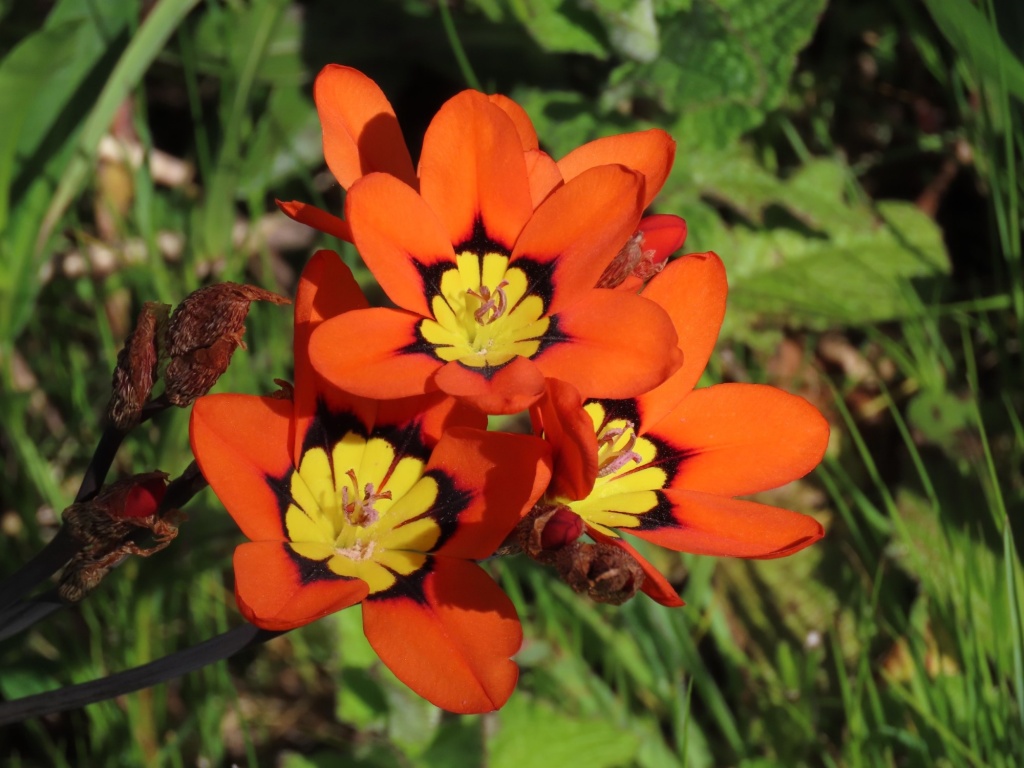[ad_1]
In the early aughties, we often took our two older children — toddlers back then — on the Bear Valley Trail in Point Reyes. On a couple of occasions when (nap)time allowed, we went as far as Arch Rock. That’s not possible today because in 2015, a few days after fissures were reported on top of the rock, it collapsed, killing one person and severely injuring another. The spur trail to that area is closed, and the coast has been recontoured afresh after the collapse.

Nature’s toolkit of fire, water and wind constantly remodels the lands we’re privileged to enjoy, as a recent visit to the Bear Valley area reminded us. This time, we were hiking with the same two children — now in their 20s — and a more recent addition who’s now a teen. Our journey began at the Bear Valley trailhead, but at Divide Meadow, we took a right onto the much-less-used Old Pine Trail and began a gentle but persistent two-mile upward climb.
The bomb cyclones and atmospheric rivers of winter and early spring had toppled aged giants and created swampy areas and transient streams along the path. We occasionally picked our way through sucking mud, and over and through multiple trees slumped across the trail. Wind took the trees and the rains muddied the trails, and we dealt with the changes by taking them head on —the park service asks that hikers not create new trails around obstacles.
From Old Pine Trail, a turn south (left) onto Sky Trail also took us through older signs of nature’s ongoing remodel. In August 2020, the Woodward Fire blasted across these ridges and valleys, torching the trees coal black, leaving a still-lingering acrid smell of crisped carbon almost three years later. It could be an eerie experience, walking through a forest of ghost trees, charred and scarred — and occasionally toppled by the wind.
But part of nature’s toolkit is new life and growth. The day of our hike was a gem of a Northern California Sunday. In the clear, soft blue-sky afternoon, welcome sunlight fell gently over a profusion of fresh green life thriving beneath the scorched trees. The rains of winter have brought out the ferns, flowers and conifer seedlings emerging next to the ruins of their parent plants. Purple lupin and golden poppies are blooming, along with forget-me-nots, chaparral currant, red elderberry, tansyleaf suncup, Douglas iris, harlequin flower and western blue-eyed grass.

At one point along the trial, the park service has a request of visitors. In its effort to capture the ongoing changes after the Woodward Fire, rangers have set up a stop on this route for trail users to record how it looks. A sign instructs users to place their phone horizontally in the space provided and snap a photo of the landscape. Images can then be emailed to an address on the sign so that the park service can track how the landscape responds to fire.
We duly took and sent in our photo, and we can even check the evolution of the post-fire recovery on a related website. The visual record indeed confirms the ongoing greening and resilience of the burn area.
As we reached the intersection of Sky Trail and the Coast Trail fire road, we had another reminder that the nature of nature is change. A favorite side-trip has been taking the stairs down to Kelham Beach. But the bottom 12 feet of steps have fallen victim to the forces of erosion. The park service warns that “if you descend onto the beach, you may not be able to get back up.” We like beaches, but not enough to take that particular risk.
Heading back to where the Coastal Trail connects with Bear Valley, we paused at the now-closed turnoff to Arch Rock. We are pretty sure we spotted a couple of whales spouting and breaching in the distance as we picked out the Farallones on the horizon.
A break at Divide Meadow to commune with some old tree friends also delivered the delightful sight of a bobcat on the hunt. In our decades of visiting what we all agree is our favorite Marin locale, we’ve had the great privilege and pleasure to witness these acts of nature, big and small, and take in the transformations and resilience of this most beautiful of places.
• Getting there: The trailhead for Bear Valley Trail is at the Point Reyes Visitor Station, off of Bear Valley Road. Our hike covered 11 miles, starting at the trailhead, with a right onto Old Pine Trail, then the left fork of Sky Trail to another left onto the Coastal Trail and return by Bear Valley Trail. The first two miles on Old Pine Trail are a gentle upward grade, and after that, the trails are mostly flat. Old Pine Trail and Sky Trail are both single tracks with encroaching greenery, some of it poison oak, so be careful. Dogs are not allowed.
Emily Willingham is a Marin science journalist, book author and biologist. You can find her on Twitter @ejwillinghamphd or on Mastodon at [email protected].
[ad_2]
